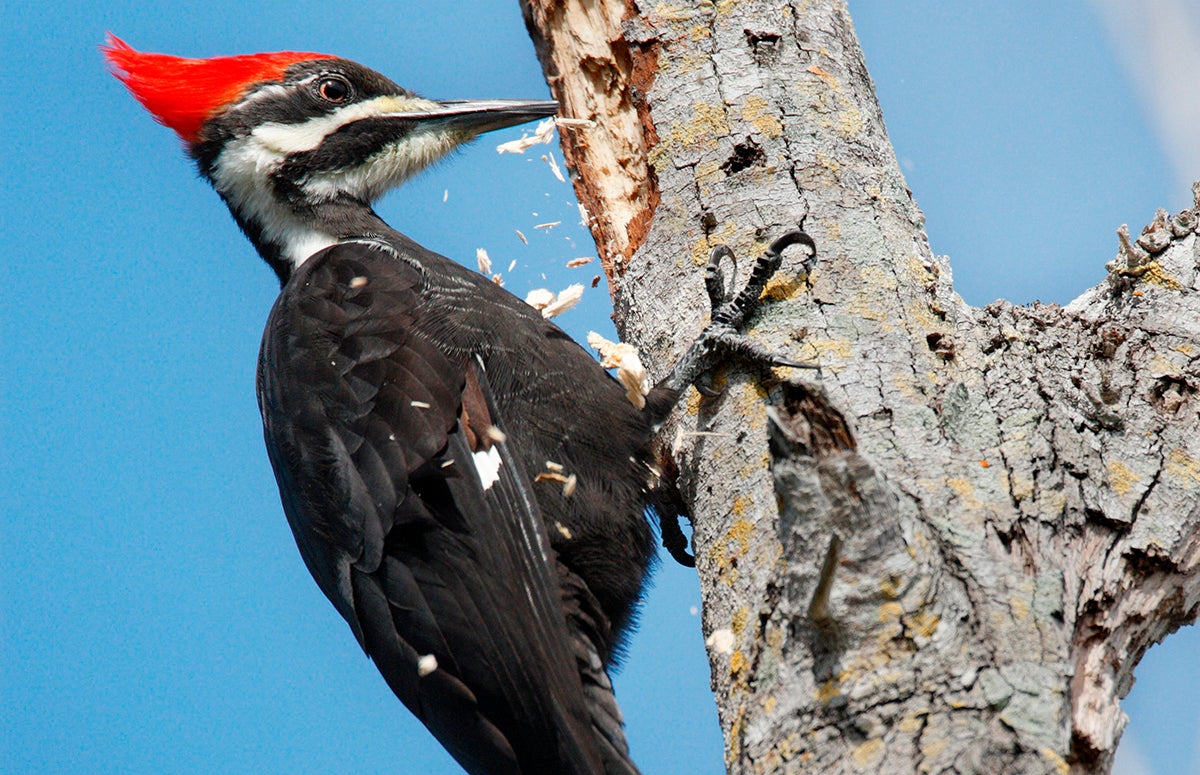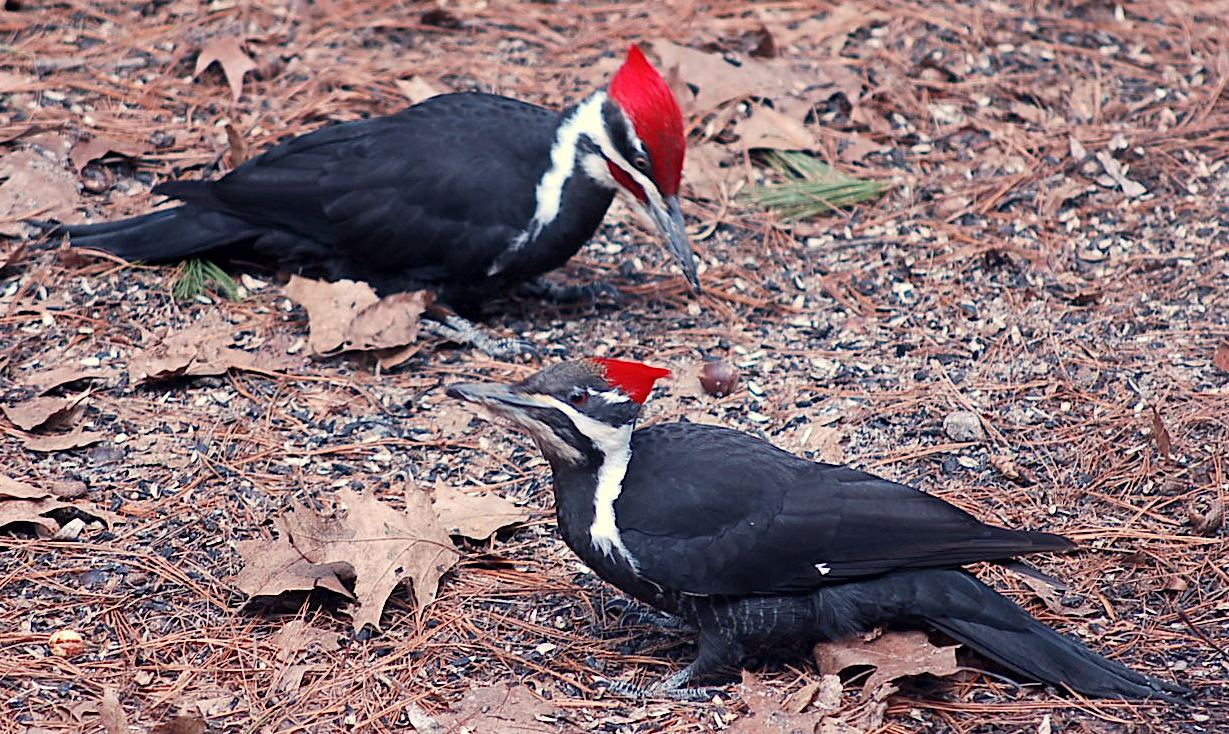Woodpeckers: A Comprehensive Overview to Understanding These Distinct Birds
Woodpeckers, with their distinct actions and physical features, have actually long captivated the inquisitiveness of ornithologists and nature fanatics alike. From their rhythmic drumming resembling via the woods to their exceptional adjustments for scaling tree trunks effortlessly, these birds offer an interesting research in bird biology. Nevertheless, what genuinely establishes woodpeckers apart is not just their striking appearance however likewise their crucial function in preserving the fragile equilibrium of ecosystems. As we explore the intricate makeup, diverse varieties, and ecological value of woodpeckers, a much deeper gratitude for these unique birds and the enigmas they hold unravels.

Woodpeckers' Drumming Behavior
Woodpeckers display a balanced and precise drumming behavior that offers numerous crucial features in their day-to-days live. This behavior is primarily related to interaction, area defense, and foraging. The distinctive drumming noise is developed by the rapid pecking of their beaks against tough surface areas such as tree trunks, branches, or also metal items.
Communication is a critical element of woodpecker actions, and drumming plays a considerable duty in this procedure. Woodpeckers use drumming to establish their visibility, attract companions, and keep call with their companions and spawn. The frequency, intensity, and duration of drumming sequences convey specific messages to other woodpeckers in the area.
In enhancement to interaction, woodpeckers make use of drumming behavior for territory protection. Woodpeckers in Florida. The loud and repetitive drumming offers as an alerting to possible trespassers, indicating that the area is already declared. By establishing their region through drumming, woodpeckers decrease the probability of conflicts over valuable resources such as food and nesting websites
Additionally, woodpeckers also use drumming as a foraging method. The balanced pecking helps them locate bugs concealing underneath the bark of trees by producing vibrations that interfere with the target's concealment. This actions showcases the flexibility and ingenuity of woodpeckers in using their drumming skills for numerous essential objectives.
Distinct Adjustments for Tree Climbing
Having actually grasped the art of drumming to interact, safeguard region, and forage, woodpeckers have actually developed special adjustments that facilitate their remarkable climbing up capacities in their arboreal habitats. One vital adjustment is their customized feet. Woodpeckers have zygodactyl feet, with two toes directing ahead and two toes aiming in reverse. This setup provides a strong grip on the vertical surfaces of trees, allowing them to stick easily while foraging for bugs or drumming. In addition, woodpeckers have stiff tail plumes that serve as a prop to sustain their bodies as they climb. These tail plumes give stability and equilibrium, making it possible for woodpeckers to maneuver up tree trunks with precision and agility.
Furthermore, woodpeckers have powerful neck muscles and an one-of-a-kind skull structure that help in their climbing up capabilities. Their strong neck muscle mass enable them to swiftly eat tree bark without experiencing whiplash, while their thick head and small mind function as shock absorbers, protecting them from the impact of repeated drumming. These adaptations jointly make it possible for woodpeckers to navigate the upright world of trees with efficiency and grace.

Role of Woodpeckers in Ecosystems
Playing a pivotal function in forest ecological communities, woodpeckers add dramatically to the balance and wellness of their environments with their one-of-a-kind actions and interactions with various other species. Among the crucial environmental features of woodpeckers is their duty in controlling insect populaces. By foraging for insects under the bark of trees, this page woodpeckers assist regulate parasite populaces, avoiding outbreaks that could hurt the total wellness of the forest. In addition, woodpeckers create cavities in trees that serve as important nesting websites for a selection of various other bird types, advertising biodiversity within the community.
In addition, the drumming and articulations of woodpeckers play an important role in interaction and territory establishment. These noises not only serve to attract friends but also assist define boundaries in between various woodpecker territories, reducing problems and promoting an unified coexistence within the forest community. Overall, the visibility of woodpeckers in forest communities highlights their significance as keystone varieties, affecting the dynamics and working of these habitats in complex ways.
Composition: Specialized Beaks and Feet
In the detailed web of forest ecological communities, the specialized beaks and feet of woodpeckers are important adaptations that allow them to fulfill their important ecological duties. Woodpeckers possess one-of-a-kind anatomical features that are specifically made to assist them in their foraging and nesting habits.
One of the most distinguishing characteristic of woodpeckers is see this site their strong, chisel-shaped beaks. These beaks are completely adjusted for drilling into wood to reveal pests, larvae, and sap surprise under the bark of trees. The solid muscular tissues and durable framework of their beaks permit woodpeckers to eat a price of as much as 20 times per secondly without triggering damages to their heads.
Additionally, woodpeckers have specialized feet that help in their acrobatic climbing up capacities. Their feet have 2 toes pointing onward and 2 toes pointing backward, providing a solid hold on vertical surfaces (Woodpeckers in Florida). This distinct foot plan, along with rigid tail feathers that work as a helpful prop, permits woodpeckers to hold on to tree trunks and branches with ease while they look for food or dig deep into nesting cavities
Woodpecker Types Variety
What variables add to the exceptional diversity of woodpecker types throughout various environments and regions? Woodpeckers are a diverse team of birds found across numerous communities worldwide, with over 200 recognized varieties exhibiting adjustments to various settings. One key element driving this variety is the availability of appropriate environments. Woodpeckers have evolved to inhabit a series of settings, from forests and forests to grasslands and deserts, each presenting one-of-a-kind challenges that have actually affected the advancement of distinctive woodpecker types.
One more adding variable to woodpecker types diversity is their specialized feeding actions. Various varieties have developed to make use of numerous food sources, such as insects, tree sap, fruits, and read what he said nuts, resulting in the growth of certain adaptations in beak shape, dimension, and toughness. These adjustments make it possible for woodpeckers to forage efficiently in their particular environments, minimizing competition amongst types and promoting niche differentiation. Furthermore, geographic isolation and historical aspects have actually played a function fit the distribution and diversity of woodpecker types, resulting in the large variety of specialized adjustments seen in these remarkable birds.

Final Thought
In final thought, woodpeckers are remarkable birds that display special drumming actions, specialized adjustments for tree climbing, and play important duties in environments. With a diverse range of woodpecker varieties found worldwide, these birds are essential for keeping the wellness and balance of woodlands and forests.
Comments on “Running Into Woodpeckers in Florida Types: Environments and Actions”